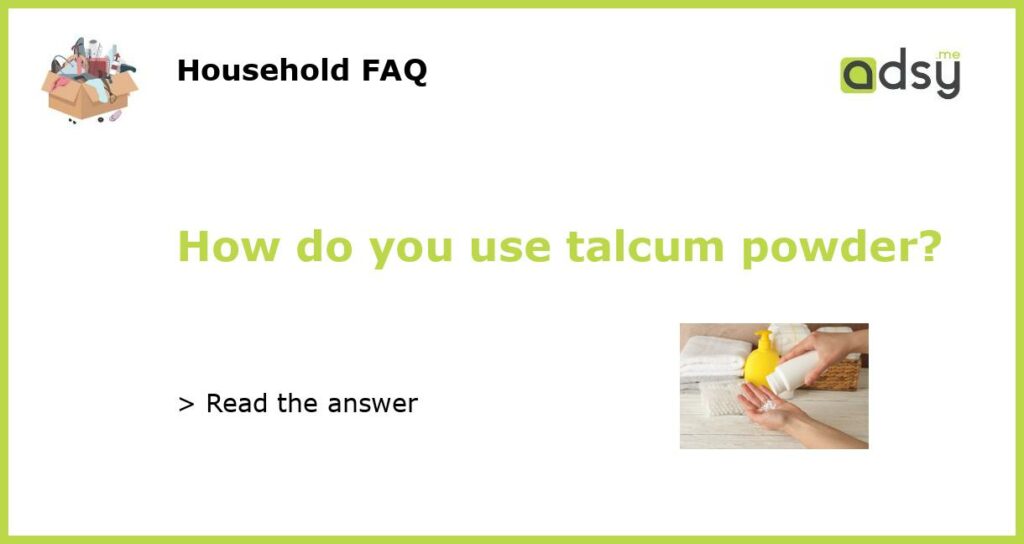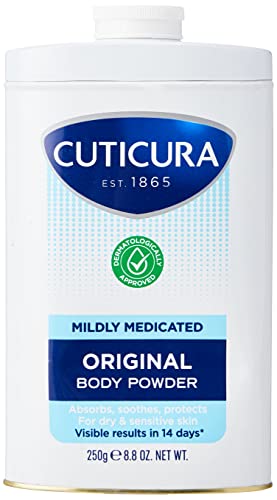What is talcum powder?
Talcum powder, also known as baby powder, is a highly refined mineral composed of hydrated magnesium silicate. It has a soft, silky texture and is typically used for personal hygiene purposes, such as preventing and soothing chafing, rashes, and excessive sweating.
Applying talcum powder to your body
To apply talcum powder to your body, follow these simple steps:
- Step 1: Take a small amount of talcum powder into your hands. It is best to start with a small amount and add more if needed.
- Step 2: Rub your hands together to evenly distribute the powder.
- Step 3: Apply the powder to the desired areas, such as underarms, groin, and feet, using gentle sweeping motions. Make sure to cover the entire area evenly.
- Step 4: Allow the powder to absorb into your skin for a few minutes before getting dressed.
Using talcum powder for babies
Talcum powder is commonly used to keep babies’ skin dry and prevent diaper rash. Here’s how you can use it:
- Step 1: Clean and dry your baby’s skin thoroughly.
- Step 2: Take a small amount of talcum powder into your hands.
- Step 3: Gently apply the powder to your baby’s diaper area, making sure to cover all the folds and creases.
- Step 4: Pat the powder onto the skin, avoiding excessive rubbing.
- Step 5: Secure the diaper in place.
Using talcum powder for fragrance
Talcum powder can also be used as a fragrant body powder. Here’s how you can use it:
- Step 1: Choose a talcum powder with a scent that you enjoy.
- Step 2: Sprinkle a small amount of the powder into your hands.
- Step 3: Rub your hands together to distribute the powder and release the fragrance.
- Step 4: Gently apply the powder to your body, focusing on areas that tend to sweat or emit odor.
- Step 5: Reapply as needed throughout the day for a fresh scent.
Precautions and potential risks of using talcum powder
While talcum powder is generally considered safe to use, there are a few precautions and potential risks to be aware of:
- Do not use talcum powder on broken or irritated skin, as it may cause further irritation.
- Avoid inhaling large amounts of talcum powder, as it can cause respiratory issues.
- There is a potential link between talcum powder and ovarian cancer in women who use it for feminine hygiene purposes. If you have concerns, consider using talc-free alternatives.
- Always read the instructions and warnings on the product packaging before using talcum powder.
- If you experience any adverse reactions or discomfort after using talcum powder, discontinue use and consult a healthcare professional.
Alternatives to talcum powder
If you prefer to avoid talcum powder, there are several alternatives available:
- Cornstarch: Cornstarch can be used as a substitute for talcum powder, as it serves a similar purpose of absorbing moisture and preventing chafing.
- Arrowroot powder: Like cornstarch, arrowroot powder is a natural alternative to talcum powder that can be used to absorb moisture and reduce friction.
- Baking soda: Baking soda can help absorb odors and moisture, making it a suitable alternative for deodorizing and refreshing your body.
- Talc-free powders: There are talc-free powders available on the market that use alternative ingredients, such as rice starch or tapioca starch, to provide similar benefits without the potential risks associated with talcum powder.
- Consult with your healthcare professional or dermatologist to find the alternative that best suits your needs and preferences.






